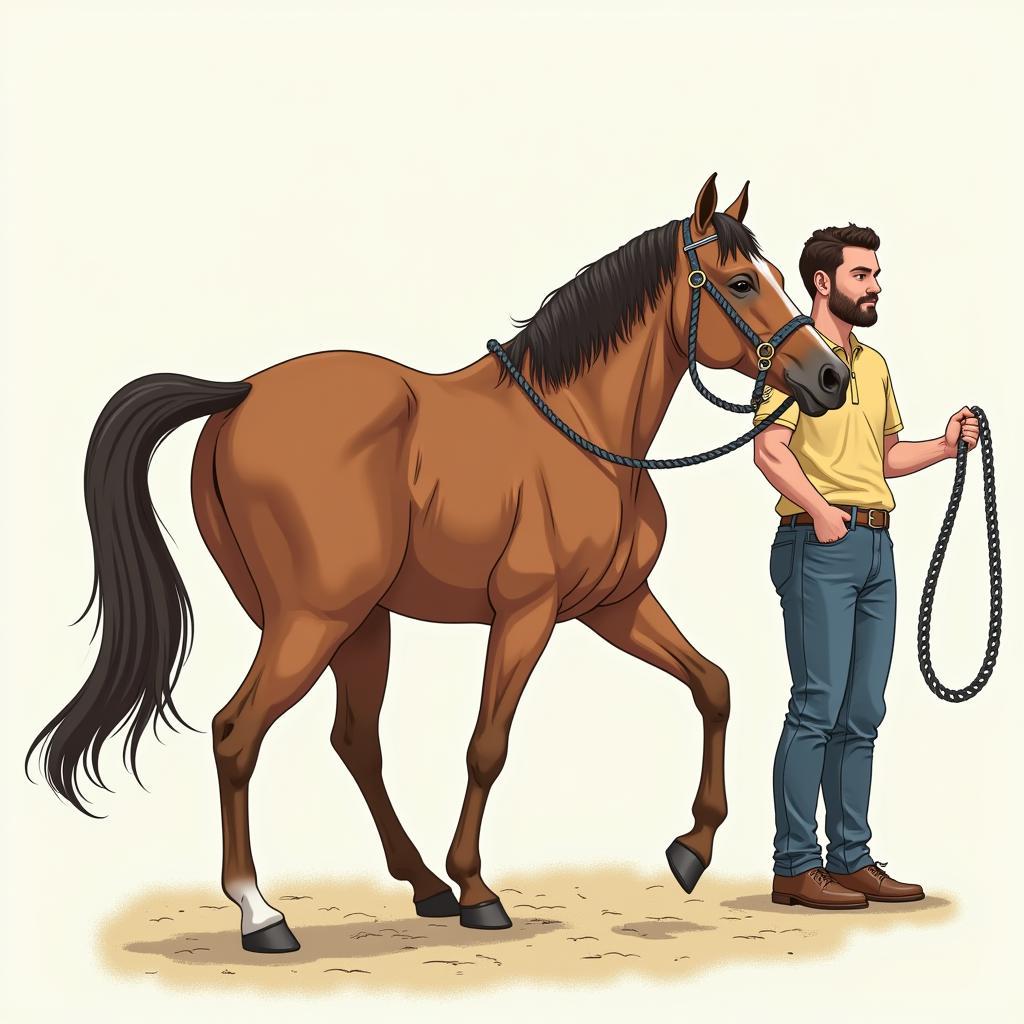Horse Chains are a common piece of equipment used in various equestrian disciplines. From leading a horse to more complex training methods, understanding the different types of horse chains, their proper use, and potential risks is crucial for any horse owner or handler. This article will delve into the world of horse chains, providing valuable insights into their diverse applications and responsible handling techniques.  Different Types of Horse Chains: Lead, Curb, and More
Different Types of Horse Chains: Lead, Curb, and More
Types of Horse Chains and Their Uses
Horse chains come in various forms, each designed for a specific purpose. Choosing the right chain depends on the activity and the horse’s temperament. Let’s explore some of the common types:
- Lead Chain: A chain lead rope for horses provides additional control when leading a horse, particularly for those who tend to pull or resist. The added weight and the slight pressure from the chain can discourage unwanted behavior.
- Curb Chain: The horse curb chain is used with a curb bit, applying pressure to the poll and chin groove. It refines communication between horse and rider, encouraging flexion and responsiveness to rein aids.
- Chain Twitch: The chain twitch horse is a controversial tool used for restraint during veterinary procedures or other situations requiring the horse to remain still. Its effectiveness and ethical implications are often debated.
- Chain Bit: A chain bit for horses can vary in design but often incorporates a chain mouthpiece, offering a sharper and more direct action than a traditional bit. Its use requires experienced hands and careful consideration of the horse’s sensitivity.
 Horse Being Led with a Chain Lead Rope
Horse Being Led with a Chain Lead Rope
Proper Handling of Horse Chains
While horse chains can be useful tools, improper use can cause discomfort, injury, or even behavioral problems. Understanding how to handle them correctly is paramount:
- Gentle Pressure: The key to using horse chains effectively is to apply gentle, consistent pressure. Jerking or yanking the chain can cause pain and fear, leading to resistance and potential injury.
- Correct Fit: Ensuring the correct fit of any chain, especially the curb chain, is essential. A loose chain can be ineffective, while a tight chain can cause excessive pressure and discomfort.
- Knowledge and Experience: Handling a horse with a chain requires knowledge and experience. Seek guidance from a qualified trainer or experienced horse person if you are unfamiliar with their use.
What is a brain chain for horses?
A brain chain for horses is another term sometimes used for a chain twitch. It is important to note that this term is not widely accepted and can be misleading.
 Safety Precautions for Using Horse Chains
Safety Precautions for Using Horse Chains
Choosing the Right Horse Chain
Selecting the appropriate horse chain depends on several factors, including the horse’s temperament, the intended activity, and the handler’s experience.
- Temperament: For sensitive horses, a lighter and less severe chain may be more suitable. Horses with a tendency to pull may require a heavier chain for effective control.
- Activity: Different activities call for different types of chains. A lead chain is appropriate for leading, while a curb chain is specifically designed for use with a curb bit.
- Experience: Handlers should choose chains they are comfortable and experienced with using. Improper use can lead to negative consequences for both horse and handler.
Conclusion
Horse chains are valuable tools in the equestrian world, serving various purposes from leading to training. However, their effectiveness relies heavily on proper handling and a deep understanding of their function. By prioritizing the horse’s well-being and seeking guidance when needed, horse owners and handlers can utilize these tools responsibly and effectively. Remember, a horse chain is only as good as the hands that wield it.
FAQ
- Are horse chains cruel? When used correctly and responsibly, horse chains are not inherently cruel. However, misuse can cause pain and distress.
- Can I use a chain lead rope on any horse? Chain lead ropes are generally suitable for most horses, but their use should be tailored to the individual horse’s temperament.
- What is the purpose of a curb chain? A curb chain refines communication between horse and rider, encouraging flexion and responsiveness to rein aids when used with a curb bit.
- How tight should a curb chain be? A curb chain should be fitted so that it lies flat against the horse’s chin groove without excessive pressure.
- Is a chain twitch humane? The use of a chain twitch is a subject of debate, with concerns about its potential to cause pain and distress. Its use should be carefully considered and limited to necessary situations.
- When should I use a chain lead rope? Chain lead ropes can be helpful when handling horses that are prone to pulling or becoming strong on the lead.
- Where can I learn more about using horse chains safely and effectively? Consulting with experienced horse professionals, such as trainers or veterinarians, can provide valuable guidance on the proper use of horse chains.
Need help? Contact us at Phone: 0772127271, Email: [email protected] or visit us at QGM2+WX2, Vị Trung, Vị Thuỷ, Hậu Giang, Việt Nam. We have a 24/7 customer service team.